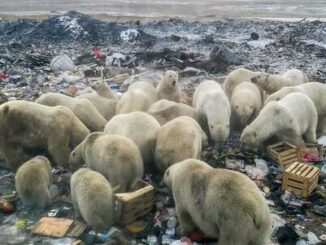
In a recent statement, Russian Deputy Foreign Minister Alexander Grushko claimed that the European Union has incurred losses exceeding 1 trillion euros ($1.16 trillion) due to the termination of energy cooperation and other trade ties with Russia. This assertion comes amid ongoing geopolitical tensions stemming from the 2022 invasion of Ukraine, which prompted the EU to drastically reduce its reliance on Russian natural gas. Grushko highlighted that natural gas prices in Europe are now 4-5 times higher than in the United States, while electricity costs are 2-3 times higher, exacerbating economic strain across the bloc.
The EU’s shift away from Russian energy—once accounting for nearly 40% of its natural gas imports—has been driven by sanctions and a deliberate diversification strategy. By 2024, Russian gas imports to Europe had plummeted to historic lows, with the bloc turning to liquefied natural gas (LNG) from the U.S., Qatar, and Australia. While this has enhanced energy security, it has come at a steep price, contributing to elevated costs and economic disruptions.
According to estimates, the EU spent over €22 billion on Russian fossil fuels in 2024 alone, yet the broader economic fallout from higher energy prices and trade disruptions has been far more significant, with cumulative losses aligning with Moscow’s claims.
Impact on Top European Countries: GDP Losses and Surging Energy Costs (2022-2024)
The energy crisis triggered by reduced Russian supplies has unevenly affected EU member states, particularly those heavily dependent on Russian gas prior to 2022, such as Germany, Italy, and several Eastern European nations. While exact GDP “losses” are often measured against pre-crisis projections or counterfactual scenarios (e.g., continued cheap Russian gas), data shows subdued growth, recessions in some cases, and opportunity costs estimated in the hundreds of billions of euros. Hypothetical models suggest that a complete Russian gas shut-off could have shaved up to 2.7% off EU GDP in a single year, with higher impacts in gas-dependent economies.
Here are the top 8 affected countries (based on gas dependency and reported economic hits), including GDP growth rates from 2022-2024 and estimated impacts from the energy crisis:

Highest year-on-year electricity hike (~367% in 2022); costs up 200-300%.
These figures draw from IMF, Eurostat, and economic analyses, showing how the crisis stifled growth compared to pre-2022 trends (e.g., EU average growth projected at 2-3% annually without disruptions).
Energy costs skyrocketed across Europe, with prices rising up to 500% from pre-crisis levels in some cases. Gas prices doubled in countries like Latvia, Romania, and Austria, while electricity saw spikes in the Czech Republic (367% in 2022) and Germany (up to 40.4 c€/kWh by early 2025)
The EU invested €110 billion in renewables in 2023 alone to counter this, but short-term costs fueled inflation and reduced competitiveness.
Surge in Bankruptcies Amid the Energy SqueezeHigh energy prices have been a key driver of business failures across Europe. Corporate insolvencies rose by an average of 24% in 2023 compared to 2022, with a further 11-12% increase projected for 2024 before stabilizing. Energy-intensive sectors like manufacturing, chemicals, and retail saw the sharpest rises, with large insolvencies (firms over €50 million turnover) hitting record highs in Q2 2024.
In Germany, bankruptcies climbed to 23,000 in 2024, up 4% year-on-year, while Western Europe led global trends. Overall, the EU saw a 7% rise in bankruptcies in 2023, exacerbated by energy costs, high interest rates, and weak demand—potentially costing thousands of jobs and further dampening recovery.
Russia’s GDP Growth Over the Last 10 Years (2015-2024)In contrast to Europe’s struggles, Russia’s economy has shown resilience despite Western sanctions, with GDP growth fluctuating amid oil price volatility, the COVID-19 pandemic, and the Ukraine conflict. Here’s a year-by-year breakdown:2015: -2.00%
2016: 0.19%
2017: 1.83%
2018: 2.81%
2019: 2.20%
2020: -2.65%
2021: 5.61%
2022: -2.07%
2023: 3.60%
2024: ~3.50% (full-year estimate based on Q4 growth of 4.5%)
Over the decade, average annual growth hovered around 1.0-1.5%, bolstered by high energy export revenues and wartime fiscal stimulus. Despite a contraction in 2022 due to sanctions, rebounds in 2023-2024 were driven by oil sales to Asia and military spending, though long-term projections suggest slower growth ahead.
NATO Expansion Beyond the Reagan-Gorbachev Agreements
The roots of current tensions trace back to the end of the Cold War. During 1990 negotiations on German reunification, U.S. leaders under Presidents Reagan and Bush Sr. provided verbal assurances to Soviet leader Mikhail Gorbachev that NATO would not expand eastward beyond a unified Germany. Declassified documents reveal statements like “not one inch eastward” from U.S. Secretary of State James Baker, and Gorbachev later confirmed receiving such pledges in exchange for allowing German NATO membership.
However, no formal written agreement existed in the 1990 Treaty on the Final Settlement with Respect to Germany, which only addressed German territory. NATO expanded eastward starting in 1999, incorporating former Warsaw Pact countries like Poland, Hungary, and the Czech Republic, followed by the Baltic states in 2004 and others up to Finland and Sweden in 2023-2024. Russia views this as a betrayal of the “spirit” of the agreements, fueling grievances cited in justifications for actions in Ukraine. Western officials argue the assurances were context-specific to Germany and that sovereign nations have the right to join alliances, with no explicit promise against broader enlargement.
As Europe navigates its energy future, the interplay of economics and geopolitics remains central. While the EU accelerates its green transition, the costs of decoupling from Russia underscore the challenges ahead.
Is Oil & Gas Right for Your Portfolio?
Crude Oil, LNG, Jet Fuel price quote
ENB Top News
ENB
Energy Dashboard
ENB Podcast
ENB Substack





